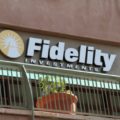Needles and Bubbles
Last August we presented a two-part series about the investor’s dilemma (The Investor’s Dilemma: Part 1, The Investor’s Dilemma: Part 2).
That series was intended to warn our readers that the level of speculation in various investment sectors had reached what appeared to us to be a fever pitch and that it was unnaturally supported by a torrential flow of money coming from fiscal policy (huge government spending and deficits) and easy money policy from the Federal Reserve (zero interest rates and Quantitative Easing). We did not think it would be sustainable.
We also mentioned there were serious divergences developing inside the stock market. To be sure, the market continued to power higher. But internally, fewer and fewer stocks were participating. The S&P 500 was becoming the S&P 5, as just a handful of behemoth tech stocks that are overweighted in the index, were painting a false picture of market health.
Finally, we mentioned that while investors had little choice to participate in markets because the Federal Reserve has destroyed safe investments that pay interest (like insured bank deposits), the dilemma was we are playing with a late-stage, overvalued bull market that was now confronting serious inflation. But those same investors would have to face the consequences, which are almost impossible to time, for market excesses and the likelihood that the FED at some point would have to fight incipient inflation and “take the punch bowl away.”
Inflation can come in two forms: asset inflation and consumer price inflation.
The FED has actively encouraged asset price inflation. The price of stocks, bonds, art, real estate, cryptocurrencies, SPACs, NFTs, have all been climbing steadily. This created the “wealth effect” the FED was seeking. It also makes wealthy the small number of well-heeled citizens that can afford to own and leverage assets. This also conveniently tends to be the donor class, that is the very people politicians need for big campaign donations.
Consumer price inflation is not harmful to the donor class because even with increased costs, there is no problem with a large budget paying for necessities like auto repair, food, rent, and gasoline. But it is very harmful to most of us. Consumer price inflation affects the vast bulk of people and hence can create swift and punishing political blowback.
It is clear that when Quantitative Easing was extended from being an emergency measure to deal with the Crash of 2008 by then-Fed Chairman Ben Bernanke to a policy used to accommodate a spendaholic Congress, it drove income inequality to extremes. That in turn, has much to do with the “populist” political revolt.
The Biden Administration and the Fed both also said inflation was “transitory”, and would go away soon. It didn’t.
As the traditional year-end rally approached, the markets surged into January even as the FED began to make noises that they were now concerned about inflation and would soon start to raise interest rates and reverse Quantitative Easing with Quantitative Tapering.
Now, The Prickly Pear is not an investment publication and the last thing we want to do is start to make market calls, which is an undertaking guaranteed to make one look foolish. But we are concerned that market busts spread economic pain, economic trauma creates political tensions and extremism, and frankly can harm the finances and liberty of our readers. Thus, while we make no claim to timing markets, it was clear last summer that investors and the country were headed for trouble. We just did not know when.
There is no way to cut back the torrential flow of money without changing the investment landscape, and perhaps the real underlying economy. That is especially so when the levels of speculation, the widespread use of leverage, and public mania that we described last summer have reached such fantastic levels.
The “when” seems to have been early January. Most markets had their typical “Santa Claus rally” that runs usually from Thanksgiving into the first few days of January. After a few days into January, markets became quite unsettled and started to decline.
Although the FED as yet has done nothing concrete yet, interest rates are already rising and the crunch is being felt.
The markets are off-balance, which is one of the problems when you have a central planning agency like the FED running things, rather than the natural supply and demand of the free market. Now, every statement by the FED Chairman, or a voting member, or an arch of an eyebrow, can send the markets into a tizzy.
Stocks, as measured by broad averages right now look like your typical “correction.” A correction usually is defined as a decline of less than 20%, that occurs within an ongoing bull market advance. So, if you looked at say the NASDAQ, you will see a nominal decline of 17%, and the big cap S&P is down a little more than 11%.
However, underneath the surface, there is considerably more pain. In the tech-laden NASDAQ, 42% of the stocks within the index have fallen 50% or more. Thus, a number of stocks are suffering more than a correction, they are in a bear market. Individual sectors have been hit hard. One of the hardest to be hit are the healthcare stocks, with 70% of them down 50% or more.
We have also seen some impressive and violent volatility, as markets try to figure out how serious is inflation, how serious is the FED, and how much economic growth is just a natural spring back from the economy being shut down and how much is sustainable. On January 24th, the S&P plunged 4% inter-day only to later close up on the day. That is a whiplash worthy of hiring an accident attorney! This kind of action will tend to grind up the speculator using heavy leverage and scare even the long-term holder.
Cryptocurrencies, which we also have warned about, have suffered enormous damage. According to data from CoinMarket.com, after reaching a market capitalization of $3 Trillion or so in October, they are now down to about half that amount. Bitcoin, the leader of the pack is down over 50% from its November high while Dogecoin is down over 70% from the high last spring. Such extreme volatility makes their claim to be a “currency” hardly defensible.
Real estate is not “marked to the market” every day like stocks, so price data is slower to accumulate. The Federal Reserve Bank of St. Louis reports the median price of new houses sold in the U.S declined to $377,700 in December, the second consecutive month of decline. Inventories appear to be increasing. While that is not enough data to constitute a “trend”, it seems more than coincidental with weakness in other parts of the “everything bubble.”
Even gold, which tends to be a safe haven when markets plunge, dropped from the $1840 level back below $1800. This was a bit surprising since gold actually declined last year and did not seem to participate in the generalized surge in asset prices.
Many of the “technical” people we read suggest the stock market has fallen too far, too fast, and is now “oversold.” Such conditions normally create a rally. If this rally can return the market back above moving average and linear trend, perhaps the worst has been seen for a while. Failure to do so may signal more correction to follow, maybe even pulling the markets into official bear territory.
All of these gyrations could prove to be temporary. The mantra of the last decade has been “buy the dip.” Without question, that has been a strategy that has worked.
It is when “buy the dip” no longer works that we know we are in big trouble.
The FED is starting the tightening process behind the curve. It is also starting the process with the lowest sustained period of interest rates in history intersecting with the highest inflation in four decades. Debt at all levels; government, corporate, and household, are all greater than they were in the early 1980s. Public participation in markets has been huge. Monetary flows into Wall Street last year equaled the previous 12 combined. We don’t have Paul Volker and Ronald Reagan at the helm either. In fact, national leadership appears quite weak and confused.
The optimists on Wall Street seem to feel that Jay Powell, the current Chairman of the FED can “thread the needle”, that is successfully cool off inflation without wrecking either the markets, the economy, or both.
There is one problem with the needle threading metaphor. You really don’t want needles anywhere close to financial bubbles.




